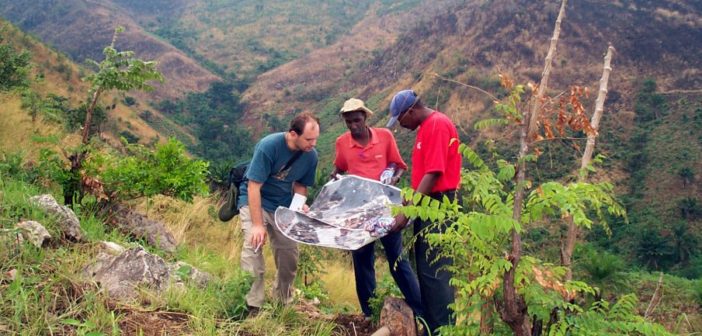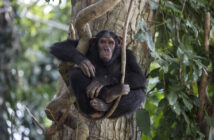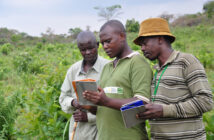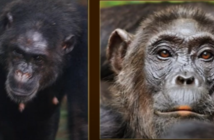As Gombe nears the end of its 55th year as the world’s longest-running study of chimpanzee behavior, the Jane Goodall Institute is looking toward the future.
To save chimpanzees from the ever-growing threat of extinction, it is essential that the Jane Goodall Institute uses the best available science and tools to identify and implement the most effective conservation strategies and actions. By combining cutting-edge geospatial technologies and local knowledge on the ground, JGI and partners are able to develop conservation action plans that guide our conservation efforts on the ground to protect chimpanzees for years to come.
Check out this roundup of recent articles on JGI’s use of conservation science, and learn more about the work that goes into keeping chimpanzees safe from threats like habitat loss and poaching.
Turning Satellite Images Into Action
For years, the Jane Goodall Institute has utilized geospatial technologies to monitor chimpanzee habitats and populations…crucial if we are to understand the threats facing chimpanzees today.
However, mapping tools only tell part of the story. As Dr. Lilian Pintea, JGI’s Vice President of Conservation Science, says in this interview, satellite imagery, for example, can be incredibly useful for showing the “what” of a landscape, e.g. patches of undisturbed forests, but it does not provide the “why”, eg. why the local communities have let that forest patch grow. In order to get a picture of what needs to be done to protect chimpanzee habitats, JGI needs both sides of the story…from a science and hi-tech level and also from a local knowledge and community level. Read more of Dr. Pintea’s interview here.
GIS technology
Ever since Dr. Goodall realized that, in order to improve the lives of the chimpanzees, we must also improve the lives of the people who live around chimpanzee habitat, JGI has been working with local communities to design more sustainable landscapes. Now, JGI is taking full advantage of GIS and high-resolution imagery to further our conservation efforts.
In 2000, JGI and colleagues at the Primate Center at the University of Minnesota used geospatial technology to integrate over 400,000 Gombe chimpanzee observations into a geodatabase, as well as examine forest cover change in core chimpanzee ranges. We have also used geospatial data to develop participatory village land use plans and community-managed forest reserves. GIS technology has allowed JGI to evaluate the effectiveness of conservation efforts as well, by visualizing the land use plans and tracking growth in forest cover. To read more about the work JGI is doing with geospatial technology to support landscapes that could better work for both people and chimpanzees, click here.
Forest Watchers
The Budongo and Bugoma Forest reserves both offer chimpanzees a safe haven of protected forest. Unfortunately, the two reserves are separated by a 40km area on community and private lands that is suffering from heavy deforestation. The survival of chimpanzees in this area is dependent on the ability to maintain chimpanzee populations outside the reserve and support gene flow between the two reserves.
In order to preserve the remaining forest corridors between the reserves, the Jane Goodall Institute has worked with more than 1800 private forest owners, local communities, and protected area rangers to build their capacity to protect the forests. This includes a new mobile app called Forest Watcher. The app, launched in Kampala in April allows the local forest monitors and rangers to use their smartphones and tablets offline in the field to investigate instances of deforestation as reported by the Global Forest Watch platform, as well as upload their own data about the illegal activities and wildlife. The improved access to data has helped to identify areas of illegal logging and farming, which can be targeted by increased patrols. Click here to learn more about JGI’s involvement in forest monitoring in Uganda.






